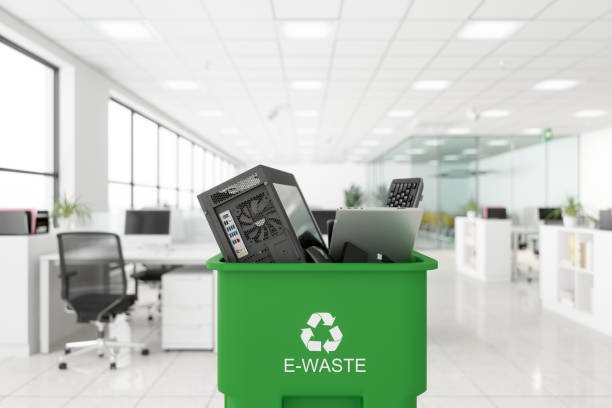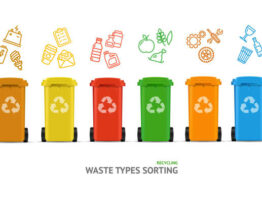
In the ever-evolving world of technology, where ongoing innovation and improvements are the norm, electronic devices have become indispensable to our everyday existence. On the other hand, the growing problem of electronic garbage, or “e-waste,” is the negative aspect of this convenience. Discarded electronic gadgets are called “e-waste,” and incorrect disposal presents severe risks to human health and the environment.
5 examples of e-waste
To better understand this rapidly developing issue, let’s examine the 5 examples of e-waste and its implications.
- Smartphones
Newer smartphone models are released yearly, attracting customers with improved features and functionalities. However, due to this obsolescence cycle, a surplus of out-of-date smartphones is being thrown away. Many hazardous materials, including lead, mercury, cadmium, and brominated flame retardants, are present in these gadgets. These chemicals can seriously endanger human and wildlife health when they are illegally disposed of, as they can seep into the soil and water. So, smartphones are one of the 5 examples of e-waste.
Furthermore, recyclable materials can recover valuable metals like palladium, silver, and gold, frequently found in smartphones. However, many of these metals wind up in landfills, contributing to resource depletion and environmental damage because of limited recycling infrastructure and the difficulty of recovering these metals.
- Computers and Laptops
The lifespan of laptops and computers is getting shorter as technology advances, which is increasing the amount of e-waste produced. Hazardous substances, including lead, mercury, chromium, and polyvinyl chloride (PVC), are present in these devices. Not only may improper computer and laptop disposal harm the environment, but it also puts data security at risk since unwanted parties may access private information on these devices.
Reusing computer parts is essential to addressing the e-waste problem. However, specific procedures are needed to guarantee the efficient and safe recovery of precious materials. Proactive programs encouraging ethical recycling and repair can prolong the life of electronics while reducing their environmental footprint.
- Televisions
The switch from flat-screen LCD and LED TVs to conventional cathode ray tube (CRT) TVs has significantly increased e-waste generated by outdated televisions. Lead is present in considerable concentrations in CRT TVs, and improper disposal can contaminate groundwater and soil. Furthermore, dangerous materials like mercury and arsenic are frequently included in more recent flat-screen TV models, increasing environmental concerns connected with their disposal.
Toxic chemicals from televisions must be recycled correctly to keep them out of the environment. E-waste recycling schemes have been implemented in several nations to promote the safe disposal of electronic equipment, including televisions. These initiatives seek to increase public awareness of the value of recycling and give customers easy ways to dispose of their used electronics securely.
- Batteries
Numerous electronic equipment, including laptops, electric cars, and renewable energy storage systems, rely on batteries for electricity. However, severe environmental and public safety concerns exist when batteries are disposed of improperly. Lead, cadmium, and lithium are among the heavy elements in batteries that can seep into the ground and contaminate ecosystems while providing health risks to people and other animals.
Reusing batteries is essential to reducing the harm electronic waste causes to the environment. Essential elements like nickel, cobalt, and lithium can be recovered through battery recycling procedures and used to make new batteries. Furthermore, by properly disposing of batteries, hazardous materials are kept out of the environment, protecting ecological integrity and public health.
- Printers and Peripherals
Peripherals such as printers and scanners are vital elements of contemporary office settings. However, like other electronic gadgets, they add to the expanding e-waste problem when disposed of incorrectly. Toxic materials in printers include lead, mercury, and brominated flame retardants. If these substances are discharged into the environment, they could harm human health and the ecosystem.
Reusing printers and other peripherals is crucial to reducing the adverse effects of e-waste on the environment. Consumers can return their old printers and peripherals for responsible recycling through the take-back programs offered by many manufacturers and retailers for electronic products. Furthermore, efforts to repair and restore electronic equipment can increase lifespan, decreasing the demand for new manufacture and e-waste production.
Like 5 examples of e-waste, you may also like to read about 7 main types of Waste.
Conclusion
E-waste presents serious environmental, health, and societal issues in our ever-digitalized world. We may lessen the effects of this escalating catastrophe by being aware of the different kinds of electronic devices that add to the e-waste stream and by implementing appropriate disposal procedures. Policymakers, manufacturers, retailers, and consumers must all work together to address the e-waste issue, which affects everything from computers and cell phones to televisions and batteries. If we work together, we can only build a more sustainable future for future generations.




